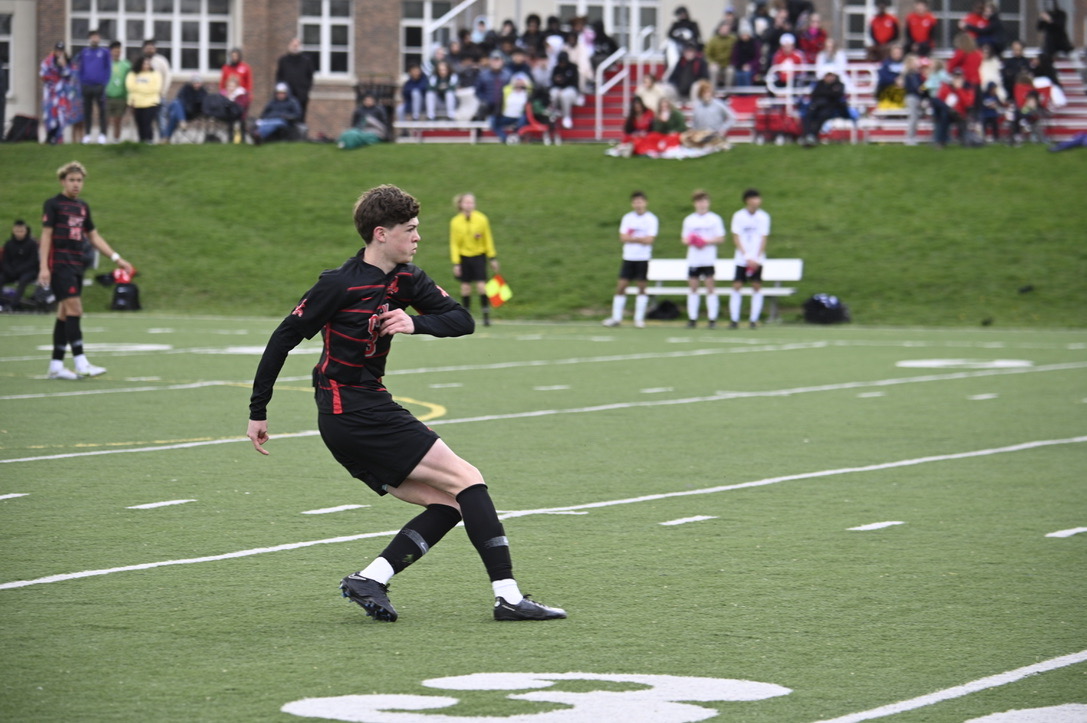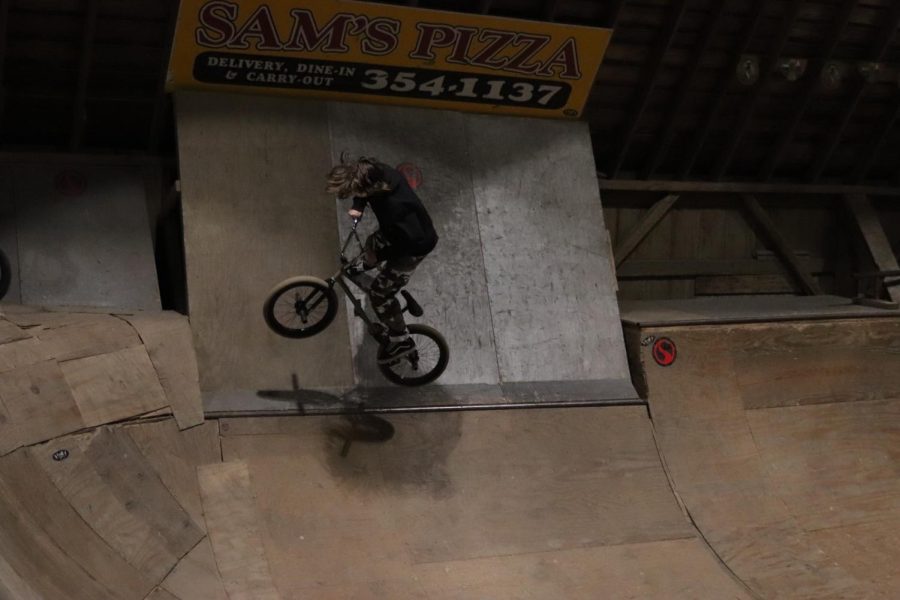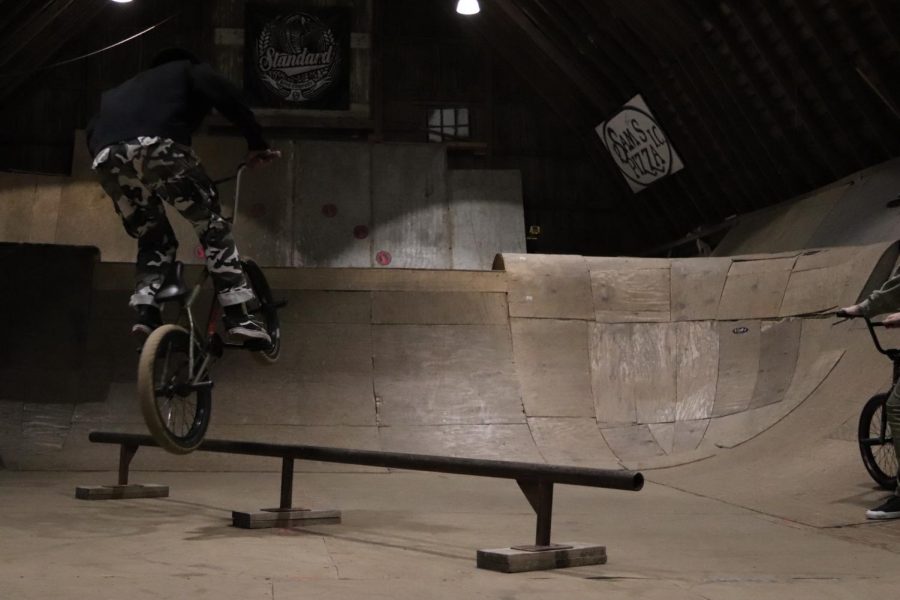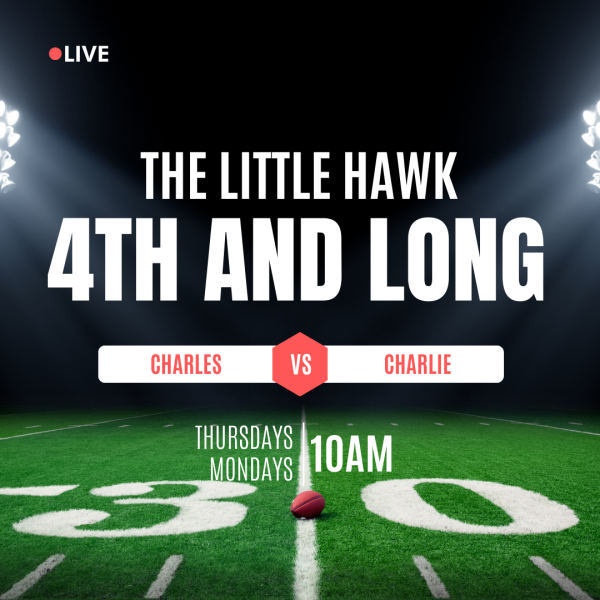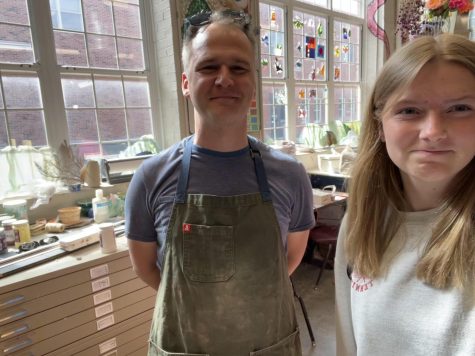BMX
January 14, 2019
It was a domino effect: Liam McKay ‘19 began experimenting with BMX biking in eighth grade, which quickly inspired Alex Jarvis ‘19. When Jarvis broke his collarbone his sophomore year, Dominic Waikel ‘19 adopted his bike for three months. Since then, the trio has been inseparable from their sport.
BMX biking originated in the 1980s, where those participating raced on dirt tracks. Since then, it has vastly evolved into what is known as ‘freestyling,’ which features less racing and more experimentation with skill and tricks.
The three boys all agree that this sport is unconventional. Waikel, McKay, and Jarvis aren’t members of a team, and do not attend competitions. They do not keep score; they just continue doing the tricks until they master them. In fact, there is no coach; they consider themselves and each other their coaches.
“[BMX] is a hard sport where you have to mentally coach yourself. What’s cool about it, and why [we] like it, is there’s no coach,” Waikel said. “[Jarvis] is my coach. [McKay] is my coach, I’m my own coach. And you can listen to them or not.”
When the group started their interest in BMX, they had to teach themselves everything due to the rarity of the sport in Iowa City.
“When we say ‘it’s different, no one does it,’ we literally mean it’s different and no one does it,” Waikel said.
BMX biking is not only a unique sport in the sense that rarely anyone in Iowa City does it, but also in that it is personalizable to an individual’s goals and style. Jarvis enjoys the flexibility in possible tricks.
“It’s not a cookie cutter pattern, if you don’t want to do something, you don’t have to; you can do whatever you want,” Jarvis said.
Waikel also pointed out that the physical aspects are also personalizable.
“Every single thing in biking can be determined by you,” Waikel said. “What color your bike is, what color your rims are, tricks you want to do, what you want to wear. You can’t do that s*** in football.”
There is a plethora of different tricks performed by BMX bikers. Some of the most common tricks are 360s (a 360 degree spin of rider with bike around vertical axis), X-ups (a rider turns the handlebars through 180 degrees while keeping both hands on),180 barspins (a 180 degree turn performed from a jump while turning the handlebars), and tailwhips (a 360 rotation of a frame around the front end of the bike). Every trick can be done differently. Waikel prides himself in putting his own style into his tricks.
“I think figuring out how to do the tricks on my own is where my style comes from. I’m gonna do a [certain] trick my way, not how Spencer Foresman does that trick,” Waikel said.
BMX bikes cost around 1,000 dollars. Because of this, Jarvis spent a year watching McKay and learning from videos before buying his own bike. All three of the boys have worked to save money for their bikes. McKay works at a bike shop, and Jarvis and Waikel work at Hyvee. In addition to purchasing the bikes, they have had to pay to service them, as frames, petals, and other parts of the bike break a lot. As he learns new tricks, Jarvis has to buy different parts for his bike. For example, a set of four pegs (used for stunts and tricks) can cost 100 dollars. He also has to buy hub guards to avoid destroying his wheels, which is another cost.
“It’s definitely an expensive sport to get into but it is well worth it. I saved up money from mowing lawns and working with my dad over the summer and my parents helped pay for some for my birthday,” Jarvis said.
Through this, he learned the basics of biking before trying it himself.
“A lot of [self teaching] came from YouTube. Once i got interested in it, and saw Liam riding, I started watching a lot of videos and looked into it for a year straight before I bought my own bike,” Jarvis said. “That’s how I knew all the terms and all the tricks. It was a lot of self experimentation too.”
Waikel, on the other hand, jumps right into tricks with little to no preparation.
“It’s funny, because I was the total opposite from [Jarvis],” Waikel said. “I’m just like ‘I’ll try it’ unless I ask Liam or something. I know I’m going to try it, I just don’t know how to do it yet.”
BMX biking takes a lot of practice because it is extremely difficult on a technical level. For example, there are very specific ways to turn the handlebars in order to successfully execute moves. Waikel, McKay, and Jarvis have worked for years to master tricks that may look simple to the public.
“It’s a puzzle to get. What most people don’t realize, is that when someone is riding their bike, or doing a trick, there’s so much more that goes into it,” Waikel said.
McKay agrees that the technicalities are very difficult.
“There’s so many little things you have to [master],” McKay said.
Every time he tries a new trick, Waikel has to suppress his fears and just go for it.
“A lot of times it’s about getting over that fear of ‘I’m going to eat so much s*** on this.’ You’re looking down a set of stairs, or you’re looking at a spot and you know that it could go so bad so quickly,” Waikel said.
But still, he finds a thrill in learning new tricks.
“Getting over that fear, and falling and getting back up, and falling and getting back up, and once you land it, it’s so worth it, because you worked so so hard for it,.” Waikel said.
Throughout his five years, McKay has also gotten discouraged at times, but remains dedicated to the work.
“Those days when you’r
e [at the skatepark trying to master little things], it feels like you’re wasting your time, when you’re actually getting better,” McKay said.The difficulties of BMX biking can cause doubts. When Jarvis became injured his sophomore year, he considered quitting because of the depth of his injury. In the end, he realized he had to continue biking.
“I actually thought about [quitting] once after I broke my collarbone. I don’t know why, I think I was just depressed because I couldn’t do anything,” Jarvis said. “I think I just wanted to keep myself from getting hurt again. I slept on a reclining chair for two months, it was just terrible…all you want to do is go outside and ride.”
Waikel also feels as though he could never quit due to all of his work. To him, it would be losing all the work that he has spent working on his skills.
“There’s no way I could quit.” Waikel said. I can’t quit because I have put way too much into it. I’ve put so much blood, sweat, and tears into it, there’s no point in quitting now. Regardless of if I’m going to go pro… I just put so much time and effort into it, it would just be pointless to quit now. I’d be throwing it all away for nothing.”
Biking professionally has been considered by the boys, but isn’t a priority. Professional BMX bikers still don’t make a significant salary.
“For me, my end goal isn’t to go pro,” Jarvis expressed. ”It’s just to have fun… just something to do that’s not just not sitting inside all of the time.”
In the end, the boys find BMX biking extremely rewarding.
“In a way, we’re trying to perfect an art that can’t be perfected,” Waikel said. “We’re just trying to make a piece of our own happiness. If you want to kick us out, kick us out. But we’re not trying to destroy property, we’re not trying to bother anyone.”










